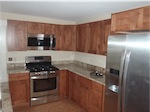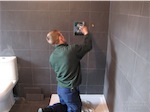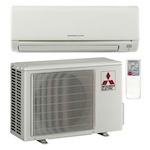Easy To Reduce Usage
Lowering the faucet flow rate not only saves water but also the energy that is needed to heat the water.
One quick and really inexpensive way to reduce flow at the faucet is to install an aerator. Some aerators cost as little as $1 each. All aerators sold in the US are rated at the federal requirement of 2.2 gallons per minute (gpm) or lower.
New federal recommendations for faucets call for maximum flow rate at .5 gpm. A lower flow rate can delay the arrival of hot water. Installing an on-demand hot water recirculation pump can overcome the delay.
Faucet Water Usage
A study demonstrates the potential water savings:
| Old Model | Low Flow | Difference | |
|---|---|---|---|
| Flow Rate (gpm) | 1.2 * | 0.5 | -0.7 |
| Average Use Per Capita Per Day (min) | 8.4 * | 8.4 | 0.0 |
| Average Volume Per Capita Per Day (gallons) | 10.08 | 4.2 | -5.9 |
| Average Volume Per Capita Per Year (gallons) | 3679.2 | 1533 | -2146.2 |
Controllers
An easy and obvious way to reduce water waste is to shut the faucet off while you are washing dishes or brushing your teeth. This is easier said then done when your hands are full. Some new technologies and some old mechanical devices can help solve this problem.
Sensors
Faucets with sensors have been adopted in many commercial facilities and as the prices drop, they will make their way into homes. This high tech controller detects when hands are under the faucet and starts water flowing; stops when the hands move away. Sensors will require a small amount of power to operate and many are battery powered. Batteries can last months to over a year. Sensors need to be adjusted after installation.
Foot Pedals
A foot pedal is simply a mechanical switch installed at the floor. They are easy to operate and have been around for years for commercial applications. However, installation will require adding a small amount of plumbing inside the kitchen or bathroom cabinet so it is easiest done during a remodel.
“Leaning” Switch
An alternative to the foot pedal is a switch activated by a bar installed beneath the sink counter. Leaning against the bar causes water to start flowing. Moving away stops the flow. There is usually a locking mechanism to let water flow continuously.







